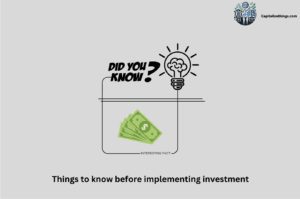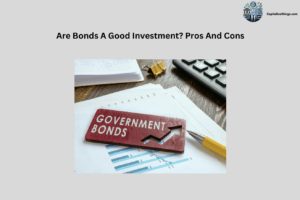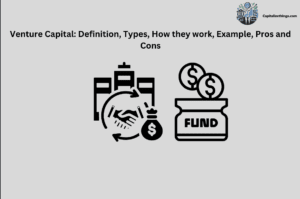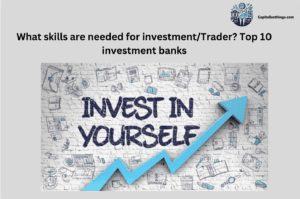Investing means putting your money to work so you can earn more over time. It’s like planting a seed that grows into a tree—your money grows by being placed in different types of investments such as stocks, bonds, real estate, or funds. These tools help people build wealth by earning returns through interest, rent, dividends, or price increases.
There are many ways to invest, each with its own level of risk and reward. From safer choices like savings accounts and government bonds to more dynamic options like cryptocurrencies and venture capital, the right investment depends on your goals, how much risk you’re comfortable with, and how long you plan to invest. Understanding how each type works helps you make smart decisions that grow your money wisely.
What Is Investing?
Investing is the process of allocating capital into financial instruments such as stocks, bonds, real estate, or funds with the goal of generating returns over time. These returns may come in the form of capital appreciation, interest, or dividends. Unlike saving, which preserves capital with minimal risk, investing assumes calculated risks to outpace inflation and accumulate wealth. The effectiveness of investing depends on strategic planning, market understanding, and disciplined execution.
Successful investing requires aligning personal financial goals with appropriate asset classes, diversifying portfolios to manage volatility, and maintaining a long-term perspective. According to a study by the Siegel (2019) in Stocks for the Long Run, equities have historically outperformed other asset classes over extended periods, reinforcing the importance of patience and compounding in investment strategies.
What Are The Different Types Of Investment Options?
The 24 major and safe long term investment options are listed below:
- Stocks: Represent ownership in a company and generate returns through price appreciation and dividends.
- Bonds: Involve lending money to governments or corporations in exchange for periodic interest payments and principal return.
- Mutual Funds: Pool investor funds to buy diversified baskets of securities managed by professionals.
- ETFs (Exchange-Traded Funds): Trade like stocks on exchanges and offer diversified exposure to sectors, indices, or commodities.
- Real Estate: Involves purchasing property to generate income via rent or value appreciation over time.
- Cryptocurrencies: Digital assets that use blockchain technology for decentralized transactions and speculative gains.
- Precious Metals: Include gold, silver, and platinum, often used as inflation hedges and portfolio stabilizers.
- Retirement Accounts: Tax-advantaged accounts such as IRAs or 401(k)s designed to encourage long-term savings.
- CDs (Certificates of Deposit): Offer fixed interest rates in exchange for locking up cash for set periods at insured institutions.
- Annuities: Contracts with insurance companies that provide guaranteed income streams, typically in retirement.
- P2P Lending (Peer-to-Peer): Allows individuals to fund loans directly to borrowers and earn interest in return.
- REITs (Real Estate Investment Trusts): Enable indirect real estate investment through publicly traded companies owning property portfolios.
- Commodities: Raw materials such as oil, wheat, or natural gas bought and sold based on market supply and demand.
- Hedge Funds: Aggressively managed portfolios accessible to accredited investors seeking high-risk, high-reward strategies.
- Private Equity: Involves investing directly in private companies not listed on public exchanges.
- Venture Capital: Supports early-stage startups with high-growth potential in exchange for equity stakes.
- Options: Derivative contracts that give the right—but not the obligation—to buy or sell an asset at a set price.
- Futures: Standardized agreements to buy or sell an asset at a predetermined price and future date.
- Forex (Foreign Exchange): Involves trading global currencies to profit from fluctuating exchange rates.
- Collectibles: Tangible items like art, coins, or rare memorabilia that may appreciate in value over time.
- Index Funds: Passively track stock or bond market indexes to mirror overall market performance.
- Education/Skills: Investing in knowledge or certifications that increase earning potential and career opportunities.
- Savings Accounts/High-Yield Cash: Provide liquidity while earning modest interest, ideal for emergency reserves.
- Socially Responsible Investing (SRI): Directs capital toward companies aligned with ethical, environmental, or social values.
1. Stocks
Stocks give the highest returns when a company grows fast. Stocks carry high risk because prices can fall quickly. Stocks offer strong liquidity as investors buy or sell shares on the stock market. Apple stock shows strong growth and large returns. Stocks suit expert investors with long-term goals and good research skills. Stocks need attention and planning to avoid large losses.
2. Bonds
Bonds offer the safest fixed returns over time. Bonds carry low risk if issued by the government. Bonds have medium liquidity, as they sell in bond markets. A U.S. Treasury bond pays steady interest for ten years. Bonds suit beginner investors who want stable income. Bonds protect capital and reduce loss from market swings.
3. Mutual Funds
Mutual funds hold many stocks or bonds in one fund. Mutual funds carry medium risk and give balanced returns. Liquidity stays high because investors buy or sell daily. A Vanguard mutual fund mixes growth and safety. Mutual funds suit beginners who want help from managers. Mutual funds reduce risk with wide asset mixes.
4. ETFs (Exchange-Traded Funds)
ETFs trade like stocks but hold many assets. ETFs offer medium returns and medium risk. ETFs have the best liquidity on stock markets. The SPDR S&P 500 ETF tracks top companies. ETFs suit beginners who want simple and low-cost growth. ETFs give strong access to large markets without high risk.
5. Real Estate
Real estate gives high profits through rent and price growth. Real estate carries high risk with big costs and debt. Liquidity stays low as properties take time to sell. A rental home earns income and gains value. Real estate suits expert investors with large capital. Real estate needs long-term plans and market skills.
6. Cryptocurrencies
Cryptocurrencies give the highest returns in short times. Cryptocurrencies carry extreme risk from price swings. Liquidity stays strong with 24/7 trading. Bitcoin made early buyers very rich. Cryptocurrencies suit expert investors who accept sharp losses. Cryptocurrencies need deep market study and fast action.
7. Precious Metals
Precious metals hold value during inflation. Precious metals give low returns but strong safety. Liquidity stays medium with global demand. Gold bars protect money in weak markets. Precious metals suit beginner investors who want safe storage. Precious metals reduce risk in wide portfolios.
8. Retirement Accounts
Retirement accounts grow savings with tax help. Retirement accounts give steady long-term returns. Liquidity stays low until retirement age. A Roth IRA holds stocks for tax-free growth. Retirement accounts suit all investors with long views. Retirement accounts build the best base for future needs.
9. CDs (Certificates of Deposit)
CDs give fixed returns with no market risk. CDs carry the lowest risk with bank insurance. Liquidity stays low since money locks for months or years. A one-year CD pays steady interest. CDs suit beginner investors who want safe savings. CDs give better rates than savings accounts.
10. Annuities
Annuities give the best long-term income for retirees. An annuity locks money in for fixed or variable returns. It offers low liquidity but high payout security. One example is a fixed annuity from an insurance company. Annuities suit expert investors who want guaranteed future income. Risk stays low but growth stays limited. Profit builds slowly through consistent payouts.
11. P2P Lending (Peer-to-Peer)
P2P lending connects investors with borrowers for top lending returns. It gives high profit but carries high risk from defaults. LendingClub is a common platform example. Liquidity stays low with fixed loan terms. P2P lending fits expert investors who study borrower profiles. Returns vary with credit ratings. Risk control makes profit steady with the best loan choices.
12. REITs (Real Estate Investment Trusts)
REITs own and manage real estate and pay the highest dividends. They bring profit from rent and property value. Public REITs offer high liquidity. One example is Realty Income Corporation. REITs suit beginner investors seeking regular income. Risk stays moderate with market movement. Returns come from both steady rent and capital gains in the real estate sector.
13. Commodities
Commodities include gold, oil, and crops with top inflation protection. They offer strong profit when supply drops or demand grows. Liquidity stays high in futures markets. Gold is the best-known example. Commodities suit expert investors who understand price cycles. Returns can swing with global trends. Risk stays high but profits grow fast with the right timing.
14. Hedge Funds
Hedge funds use many strategies to seek the highest returns. They carry high risk with low liquidity and large minimums. One example is Bridgewater Associates. Hedge funds suit expert investors with large capital and deep research. Profits vary with fund goals. Returns often beat markets, but losses hit hard without smart strategy. Entry stays limited for beginners.
15. Private Equity
Private equity buys private firms for the strongest growth. Liquidity stays low as money stays locked for years. One example is Blackstone Group. Private equity suits expert investors with high net worth. Risk grows with company failure, but returns grow best with business success. Profits come from resale or growth in value over long periods.
16. Venture Capital
Venture capital funds startups for the top potential growth. It gives the highest profit when startups succeed. Liquidity stays low due to long holding times. An example is Sequoia Capital. Venture capital suits expert investors with big funds. Risk stays high with startup failure. Returns grow fast from major exits. Success depends on picking future market leaders.
17. Options
Options give the right to buy or sell assets with set terms. They offer high profit with high risk. Liquidity stays strong in active markets. An example is call options on tech stocks. Options suit expert investors who track price moves. Returns can grow fast or fall to zero. Profit needs timing and strategy for best outcomes.
18. Futures
Futures lock in prices for assets like oil or wheat. They offer top profit but come with high risk. Liquidity stays strong on exchanges. One example is crude oil futures. Futures suit expert investors who manage leverage. Returns grow with price moves, but losses rise fast. Quick decisions make profits big or losses sudden.
19. Forex (Foreign Exchange)
Forex involves trading global currencies. Forex gives the highest liquidity and fastest returns. Forex holds high risk due to market shifts. A strong example is trading USD to EUR. Forex needs expert skill for profit. Forex works best for trained investors who study charts and trends. Forex offers big profit chances but needs control and sharp focus.
20. Collectibles
Collectibles include rare coins, stamps, or vintage toys. Collectibles give long-term returns and hold value over time. A rare comic book can sell for high profit. Collectibles carry the highest risk from market demand changes. Liquidity is low as selling needs time. Collectibles suit expert investors with deep knowledge and patience for strong returns.
21. Index Funds
Index funds track market indexes like the S&P 500. Index funds give top diversification and strong long-term returns. Index funds offer low risk and medium liquidity. An example is the Vanguard 500 Index Fund. Index funds fit beginners who want simple and broad market exposure. Index funds give the safest way to grow money steadily.
22. Education/Skills
Education builds strong personal growth with long-term gains. Skills like coding or trade training lead to better job income. Education carries low liquidity but returns the highest career profit. A trade school certificate raises income chances. Education suits both beginners and experts who want life value. This investment needs time and gives strong personal rewards.
23. Savings Accounts/High-Yield Cash
Savings accounts and high-yield cash give the lowest risk. These tools offer stable but low returns. Online banks give the best interest rates. Liquidity is the highest since cash is easy to use. A high-yield savings account fits beginners who want safety and access. This investment works for short-term goals and cash needs.
24. Socially Responsible Investing (SRI)
SRI supports companies with good ethics and green goals. SRI gives steady returns with values. Risk stays medium as performance follows market and cause. An example is investing in a clean energy fund. SRI suits both beginner and expert investors who care about impact. Liquidity stays strong as SRI uses public stocks and funds.
How Does Investing Work?
Investing works by allocating capital into income-generating or appreciating assets such as stocks, bonds, and real estate, allowing individuals to grow wealth over time through compounding, market exposure, and strategic decision-making. The process involves selecting appropriate investment vehicles based on financial goals, risk tolerance, and time horizon. Successful investing combines knowledge, patience, and disciplined execution to outpace inflation and build long-term value.
Each type of investment operates under distinct mechanisms. Stocks provide returns through capital appreciation and dividends when companies perform well. Bonds generate steady income via fixed interest payments with principal repayment at maturity. Real estate increases in value and can produce rental income, offering both growth and cash flow. Funds—such as ETFs and mutual funds—pool resources to offer diversified exposure across markets, reducing individual asset risk while capturing broader trends.
Risk and return are inherently linked in investing. Higher-risk assets like cryptocurrencies or venture capital may yield outsized returns but carry increased volatility. Lower-risk instruments such as CDs or government bonds offer more stability with modest gains. According to a 2021 report by the Morningstar, diversified portfolios that maintain long-term allocations typically experience smoother growth trajectories, emphasizing the importance of asset allocation and rebalancing. Skillful investing requires continuous learning, goal alignment, and adaptability to changing economic conditions.
Is Investing A Good Choice For Investors?
Investing is a strong method to grow capital over time, using assets like stocks, bonds, or real estate to generate returns through appreciation, dividends, or interest. These financial instruments enable wealth accumulation by outperforming inflation and leveraging compounding effects. Unlike saving, which preserves value with minimal growth, investing introduces calculated risk in exchange for higher long-term gains. Strategic allocation, diversification, and market understanding increase the likelihood of achieving financial milestones such as retirement or property purchase.
However, investing involves market volatility that can lead to short-term losses. Equities may decline rapidly due to economic shifts, while real estate may face liquidity challenges during downturns. According to Vanguard (2021), diversified portfolios have historically recovered from major market drops within 3–5 years, highlighting the importance of patience and disciplined rebalancing. Therefore, investors must assess their risk tolerance and investment horizon before committing capital. If you’re evaluating whether investing aligns with your financial goals, our team provides tailored strategies that match your risk profile and long-term objectives.
Is Professionally Managed Investing a Good Choice For Investors?
Professionally managed investing involves delegating portfolio decisions to certified experts who apply research, analytics, and strategic planning to optimize returns based on client goals. This approach suits individuals lacking time or expertise to manage investments independently, offering structured asset allocation and ongoing performance tracking. Services like Fidelity-managed retirement accounts provide access to institutional-grade tools, reducing the learning curve for novice investors. Expert oversight helps navigate complex markets while maintaining disciplined investment behavior.
Despite these benefits, professionally managed services often include management fees that reduce net returns over time. Some actively managed funds fail to outperform passive index benchmarks, as reported by Morningstar (2022), where only 23% of U.S. equity funds beat their benchmark over a 10-year period. Additionally, fee structures vary widely, making it essential to evaluate track records and cost-efficiency before selecting a provider. If professionally managed investing fits your needs, we at capitalizethings.com offer customized advisory services that balance cost, expertise, and performance alignment with your financial targets. Reach out to us via email or services page contact form or call at +1 (323)-456-9123 for free 15-mins consultation.
How Do Derivatives Work in Investing?
Derivatives work as financial contracts that derive value from underlying assets such as stocks, bonds, commodities, or currencies, and function primarily to hedge risk or speculate on price movements. Investors use instruments like options, futures, and swaps to gain exposure without owning the asset directly, enabling leveraged positions and strategic flexibility. These tools allow traders to lock in prices, manage volatility, and capitalize on market inefficiencies, making them essential components of advanced investment strategies.
Derivatives enable investors to take directional bets or protect existing holdings with less upfront capital compared to buying the asset outright. For example, a call option gives the buyer the right—but not the obligation—to purchase a stock at a set price, limiting downside while preserving upside potential. According to the Hull (2021) in Options, Futures, and Other Derivatives, derivatives markets enhance liquidity and price discovery across global financial systems, especially in institutional trading environments.
However, derivatives carry high risk due to leverage and market sensitivity, requiring deep understanding and disciplined risk controls. Sudden price swings can lead to amplified losses, particularly in futures or swap agreements where obligations must be fulfilled regardless of market conditions. Therefore, derivatives suit experienced investors who integrate them into structured strategies rather than casual portfolios.
Do Options Contracts Use Leverage Or Collateral?
Yes, options contracts use leverage by allowing investors to control a large number of underlying assets with a relatively small upfront cost known as the premium. This leverage amplifies both potential returns and risks, as price movements in the underlying asset significantly impact the option’s value. Unlike futures, options do not typically require collateral unless written (sold) without ownership of the underlying asset, in which case margin requirements may apply. The leveraged structure makes options a strategic tool for capital-efficient exposure to financial markets.
Leverage in options enables traders to speculate on price movements or hedge existing positions while limiting initial capital outlay. According to the Hull (2021) in Options, Futures, and Other Derivatives, leveraging options can enhance portfolio performance if used with disciplined risk management and market insight.
Are Futures Riskier Than Stocks?
Yes, futures are riskier than stocks due to their leveraged nature, time-bound contracts, and margin requirements that amplify both gains and losses. Unlike stocks, which represent ownership in a company and can be held indefinitely, futures obligate traders to buy or sell an asset at a predetermined price and date. This forced execution increases exposure when market conditions move unfavorably. Additionally, futures trading often involves high leverage—requiring only a fraction of the contract value as collateral—which magnifies volatility impact.
Futures demand active risk management because small price movements can trigger margin calls, leading to rapid capital depletion. According to a report by the Commodity Futures Trading Commission (CFTC, 2021), over 70% of retail futures traders experience net losses within six months due to these structural risks. In contrast, stocks allow investors to ride out short-term fluctuations without mandatory liquidation, offering more long-term stability.
Can Derivatives Hedge Against Market Losses?
Yes, derivatives can hedge against market losses by offsetting potential declines in underlying assets through instruments such as options, futures, and swaps. Hedging works by taking an opposing position in a derivative that gains value if the primary asset loses it. For example, purchasing a put option allows investors to sell a stock at a set price, limiting downside risk during market downturns. This mechanism is particularly valuable for managing portfolio volatility and preserving capital.
Futures contracts also serve as effective hedging tools, especially in commodity markets where producers lock in prices to protect against adverse movements. A farmer selling a wheat futures contract secures a fixed income regardless of harvest-time market swings. Similarly, interest rate swaps enable businesses to stabilize cash flows by exchanging variable-rate debt for fixed obligations. While hedging reduces exposure, it may limit upside potential, requiring precise calibration based on asset class and market outlook.
Can Investing Help In Growth Of Money?
Yes, investing accelerates money growth by allocating capital into income-generating assets such as stocks, bonds, and real estate, which compound returns over time. These financial instruments enable investors to build wealth through appreciation, interest, or dividend income. Unlike traditional savings accounts with minimal yields, strategic investment vehicles outpace inflation and increase net worth. The compounding effect becomes more powerful with consistent contributions and extended holding periods.
Reinvesting earnings enhances the growth potential of an investment portfolio. Dividends from stocks or interest from bonds can be reinvested to purchase additional shares or units, increasing future returns. According to a report by Morningstar (2021), investors who reinvest dividends in broad-market index funds see up to 30% higher total returns over a decade compared to those who do not. This compounding mechanism rewards long-term commitment and disciplined financial behavior.
The selection of asset classes directly influences the rate and stability of capital growth. Equities provide higher average annual returns but come with volatility, while fixed-income instruments like government bonds offer predictable yield with lower risk. Real estate and commodities act as hedges against market downturns and diversify income streams. A well-balanced portfolio aligns with personal financial goals, risk tolerance, and time horizon, ensuring sustainable wealth accumulation.
Starting early with small, regular investments can lead to substantial financial outcomes due to the time-value of money. Even modest monthly contributions to retirement accounts or index funds grow significantly over decades. Investors who combine knowledge, patience, and professional guidance maximize their chances of achieving milestones such as homeownership, education funding, or secure retirement.
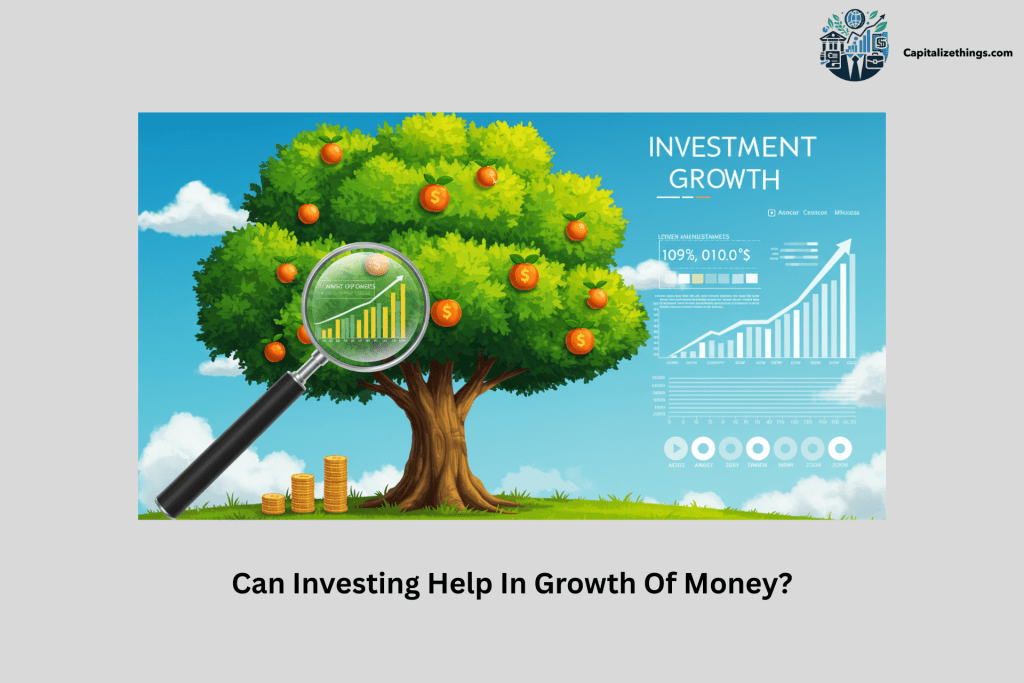
What Investing Styles Are There To Adapt For Investors?
The investing styles available to investors include active, passive, growth, and value strategies, each shaping how capital is allocated to achieve specific financial outcomes through different market approaches. These styles influence portfolio construction, risk exposure, and return expectations based on individual goals and market outlooks. Selecting the right style depends on experience level, time commitment, and financial objectives. Understanding these styles helps investors align their strategy with long-term wealth-building plans.
Active investing involves frequent trading and in-depth market analysis to outperform benchmark indices. This approach requires continuous research, timing precision, and a deep understanding of economic indicators. It is best suited for experienced investors or professional fund managers who can dedicate time and resources to monitor markets daily. According to Morningstar (2022), only 35% of actively managed U.S. equity funds outperformed their passive counterparts over a ten-year period.
Passive investing focuses on replicating the performance of a broad market index through low-cost index funds or ETFs. It minimizes transaction costs and tax implications by reducing turnover within the portfolio. This style is ideal for beginner investors seeking steady, long-term returns without the need for constant monitoring. A well-known example is investing in the SPDR S&P 500 ETF (SPY), which mirrors the performance of the S&P 500 index.
Growth investing targets companies expected to grow earnings at an above-average rate compared to the market. Investors in this style focus on revenue expansion, innovation potential, and market leadership rather than current valuations. It aligns well with long-term investment horizons and tolerance for volatility, as high-growth stocks may experience sharp price swings. Tesla’s rapid rise from $50 to over $300 per share between 2019 and 2021 exemplifies the potential of growth investing when backed by strong fundamentals.
Value investing emphasizes undervalued stocks trading below their intrinsic worth due to temporary market inefficiencies. Investors seek companies with strong balance sheets but low price-to-earnings ratios, anticipating future price corrections. This method rewards patience and analytical skill, often delivering returns when the market reassesses the company’s true value. Warren Buffett, a prominent advocate of value investing, has consistently outperformed the market using this principle through Berkshire Hathaway. Are you determining which investing style suits your financial goals and risk profile than we at capitalizethings.com offer personalized advisory services to help you build a strategy that aligns with your timeline and aspirations.
What Are Low-Risk Vs. High-Risk Investments?
Low-risk investments are financial instruments that offer stable returns with minimal volatility, such as government bonds, savings accounts, and certificates of deposit, making them ideal for capital preservation. These options appeal to conservative investors seeking predictable income and reduced exposure to market fluctuations. In contrast, high-risk investments—like stocks, cryptocurrencies, and venture capital—carry the potential for significant gains but also expose investors to higher chances of loss. The distinction between these two categories helps shape investment strategies based on individual risk tolerance and time horizon.
High-risk investments typically involve assets sensitive to economic cycles, geopolitical events, and sector-specific volatility. Examples include leveraged ETFs, initial public offerings (IPOs), and foreign exchange trading. According to the Ibbotson Associates (2021) in Stocks, Bonds, Bills, and Inflation: 2021 Yearbook, equities have historically delivered an average annual return of around 10% over long periods, though with notable short-term variability. This underscores the importance of aligning investment choices with personal goals, financial capacity, and emotional readiness for market swings.
A balanced approach often includes both low- and high-risk assets to optimize growth while managing downside risk. Diversification across asset classes allows investors to benefit from compounding while cushioning against sharp declines. For instance, a young investor might allocate more to equities early on, gradually increasing bond exposure as retirement nears. This structured allocation reflects how different types of investments work together within a comprehensive wealth-building framework.
How Do Bonds Generate Regular Income?
Bonds generate regular income by paying fixed interest at set intervals, offering investors predictable cash flow based on the issuer’s creditworthiness and contractual terms. These periodic payments—also known as coupon payments—are made from the issuing entity, such as a government or corporation, in exchange for capital lent by bondholders. The structure of bonds makes them ideal for conservative investors seeking steady returns without high volatility. This aligns with broader investment strategies that emphasize income generation through diversified asset allocation.
The income stream is determined by the bond’s face value, coupon rate, and maturity period. For example, a 10-year U.S. Treasury bond (T-bond) with a 3% annual coupon rate pays $30 annually for every $1,000 invested, disbursed semiannually. Government-issued bonds are typically low-risk, while corporate bonds may offer higher yields to compensate for increased default risk. Investors can tailor their bond selection to match personal risk tolerance and liquidity needs.
Diversifying across bond types—such as municipal, corporate, or inflation-linked securities—enhances income stability and mitigates exposure to market fluctuations. According to Fabozzi (2020) in The Handbook of Fixed Income Securities, strategic bond portfolio construction significantly improves income predictability and capital preservation over long-term investment horizons. At capitalizethings.com we help clients build income-focused portfolios using tailored bond strategies that align with their financial goals and risk profile.
What Is The Role Of The Sec In Investing?
The role of the SEC in investing is to regulate financial markets, enforce transparency, and protect investors by ensuring fair trading practices and accurate disclosure. As the primary regulatory authority overseeing U.S. securities markets, the SEC mandates standardized reporting, monitors broker-dealers, and prosecutes fraudulent activities to maintain investor confidence. Its oversight ensures that all market participants have equal access to material information, supporting informed and ethical investment decisions.
The SEC requires companies to disclose audited financial statements, business operations, and potential risks before issuing stock to the public. These disclosures, including Form 10-K annual reports and Form 8-K event filings, enable investors to evaluate opportunities based on verified data. Additionally, the SEC licenses and audits investment advisors and brokerage firms, enforcing compliance with fiduciary standards and conduct-based rules.
By regulating initial public offerings (IPOs), insider trading, and mutual fund structures, the SEC safeguards against manipulation and unethical behavior. It also educates retail investors on identifying scams and understanding risk factors associated with different asset classes. A 2021 study by the Journal of Financial Regulation found that SEC enforcement actions led to a measurable decline in insider trading incidents and improved overall market integrity.
How Do Hedge Funds Limit Risk?
Hedge funds limit risk through advanced strategies such as short selling, derivatives, and market-neutral positioning to balance exposure and reduce volatility. These techniques allow hedge funds to generate returns even during economic downturns by actively managing downside potential while maintaining upside opportunity. By using dynamic risk controls, hedge funds align with the broader investment goal of capital preservation and strategic growth.
They diversify across asset classes, including equities, fixed income, commodities, and currencies, to avoid overexposure in any single market segment. This multi-market approach ensures that losses in one area can be offset by gains in another. According to a study by Fung and Hsieh (2001), hedge fund strategies that incorporate arbitrage and trend-following models show reduced correlation with traditional markets, enhancing portfolio resilience.
Additionally, hedge funds frequently use leverage cautiously and apply stop-loss mechanisms to control drawdowns. They also employ quantitative risk models to forecast market movement and adjust positions accordingly. These tools enable investors to maintain performance consistency across varying economic cycles, supporting long-term wealth accumulation within diversified portfolios. Capitalizethings.com designs institutional-grade risk mitigation strategies for clients exploring alternative investments and how they work within balanced financial frameworks.
What Caused The 2008 Investment Collapse?
The 2008 investment collapse was caused by excessive risk-taking in the housing market, driven by subprime mortgage lending and complex financial instruments rated inaccurately. Banks issued high-risk home loans to borrowers with poor credit histories and packaged these into mortgage-backed securities (MBS) sold globally. As defaults surged, the value of these assets collapsed, triggering systemic failures across financial institutions.
Financial firms amplified the crisis by leveraging large debt amounts to acquire risky assets, assuming continuous price increases. When housing prices fell, highly leveraged entities like Lehman Brothers faced insolvency, revealing the fragility of the financial system. This overreliance on borrowed capital without adequate risk assessment destabilized global markets.
Credit rating agencies further fueled the crisis by assigning misleadingly high ratings to risky mortgage-backed bonds, leading investors—including pension funds and hedge funds—to treat them as safe holdings. When the true risk surfaced, panic spread, liquidity vanished, and trust eroded across capital markets. Per the Financial Crisis Inquiry Commission (2011), this failure in oversight and transparency was central to the scale of the collapse.
How Do Index Funds Track Markets?
Index funds track markets by replicating the composition and performance of a specific financial index, such as the S&P 500 or Nasdaq Composite, through proportional ownership of its underlying securities. These funds purchase each stock or bond in the index at the same weight it holds within that benchmark, ensuring returns closely mirror market movements. This passive investment strategy avoids active stock picking and instead focuses on broad market exposure to achieve consistent long-term growth.
By mirroring established indexes, index funds reduce management complexity and transaction costs, offering investors a cost-efficient method for diversified portfolio building. According to Vanguard’s Advisor’s Alpha report (2019), index funds historically outperform most actively managed funds over extended periods due to lower expense ratios and reduced trading frequency. Their transparent structure and low turnover make them ideal for individuals seeking steady wealth accumulation aligned with economic trends.
Index funds automatically adjust holdings when the tracked index undergoes changes, such as adding or removing components. This dynamic rebalancing ensures continuous alignment with the index while minimizing deviation from expected returns. Investors benefit from stability, predictability, and risk distribution across a wide range of assets, reinforcing their role as foundational instruments in modern investment planning.
Are Alternative Investments High-Risk Or Low-Risk?
Alternative investments are generally high-risk compared to traditional asset classes like stocks and bonds, but they offer diversification benefits and potential for uncorrelated returns. These include non-traditional assets such as private equity, real estate, commodities, hedge funds, and collectibles, which often lack liquidity and face volatile pricing. Due to limited regulatory oversight and valuation challenges, alternative investments require deeper due diligence and strategic allocation.
Some alternative investments, like commercial real estate or infrastructure funds, generate income through rental yields and appreciation, providing downside protection during market downturns. For example, according to a study by the National Bureau of Economic Research (NBER, 2020), real assets such as gold and farmland have historically acted as inflation hedges, stabilizing portfolios under economic stress. However, speculative alternatives like venture capital or fine art can experience sharp value swings based on niche demand or market sentiment.
Because of their complex nature, alternative investments are typically suited for accredited or institutional investors who can tolerate higher volatility and longer holding periods. They complement traditional portfolios by reducing overall risk through low correlation with public markets. When strategically deployed, these tools enhance return potential without direct dependence on stock or bond market performance.
How Do Risk Levels Vary By Investment?
Risk levels vary by investment type, with low-risk instruments like government bonds and certificates of deposit offering stable returns, while high-risk assets such as equities and cryptocurrencies provide higher return potential at the cost of increased volatility. Each investment category responds differently to market forces, inflation, and economic cycles, influencing how capital is preserved or grows over time. Investors must assess their risk tolerance, investment horizon, and financial goals when selecting assets.
Diversification spreads exposure across asset classes—such as stocks, bonds, and real estate—to reduce the impact of underperforming investments. This strategy lowers unsystematic risk and stabilizes portfolio value during market fluctuations. According to Modern Portfolio Theory (Markowitz, 1952), an optimized mix of non-correlated assets enhances risk-adjusted returns, improving long-term wealth accumulation.
Risk profiling should be dynamic, adapting to life stages, income stability, and macroeconomic conditions. Conservative investors may prioritize fixed-income securities, while aggressive investors might allocate more toward growth assets. Understanding these variations enables informed decision-making aligned with personal financial objectives.
Can Robo-Advisors Manage Passive Investments?
Yes, robo-advisors manage passive investments by using algorithm-driven platforms to automate portfolio construction, asset allocation, and rebalancing based on predefined risk profiles and long-term financial goals. These digital platforms follow rules-based strategies to mirror market index performance with minimal human intervention. They rely on historical data and modern portfolio theory to distribute capital across diversified instruments such as ETFs (Exchange-Traded Funds) and index funds. According to a 2021 report by Deloitte, robo-advisors enhance investment efficiency by reducing emotional decision-making and maintaining disciplined, data-backed portfolio adjustments.
By continuously monitoring market fluctuations and automatically adjusting holdings, robo-advisors maintain optimal exposure to various asset classes while keeping fees low. This automated oversight ensures that investors remain aligned with their target allocations without needing to actively track or manually update their portfolios. The simplicity and cost-effectiveness of these systems make them especially suitable for beginners or individuals seeking hands-off wealth growth through passive investment strategies.
How Do Retirement Accounts Build Wealth?
Retirement accounts build wealth by enabling consistent contributions, tax-advantaged growth, and compounding returns across extended time horizons. These financial tools combine strategic savings with market exposure to accumulate capital efficiently. By aligning investment choices with long-term goals, individuals can grow substantial assets without requiring high-risk strategies. The effectiveness of these accounts increases with disciplined usage and early initiation.
Wealth accumulation in retirement accounts occurs through a combination of principal additions and investment-generated earnings. Assets such as stocks, bonds, and index funds (ETFs) within these accounts grow alongside broader market trends. For example, the S&P 500 has historically returned around 10% annually, according to S&P Dow Jones Indices (2023), reinforcing the benefit of long-term equity exposure. Each contribution amplifies future gains by increasing the base on which compound interest operates.
Tax advantages further enhance wealth-building potential. Traditional IRAs and 401(k)s defer taxes on earnings until withdrawal, allowing reinvestment of gains during the account’s growth phase. Roth accounts offer tax-free withdrawals under specific conditions, preserving more net returns for the investor. Employer-sponsored plans like 401(k)s also provide matching contributions, effectively adding free capital to the investment pool. This structured approach simplifies wealth creation through automation, incentives, and favorable tax treatment. Our team at capitalizethings.com helps clients leverage retirement accounts as core components of diversified investment strategies, ensuring optimal alignment with personal timelines, risk profiles, and long-term financial outcomes.
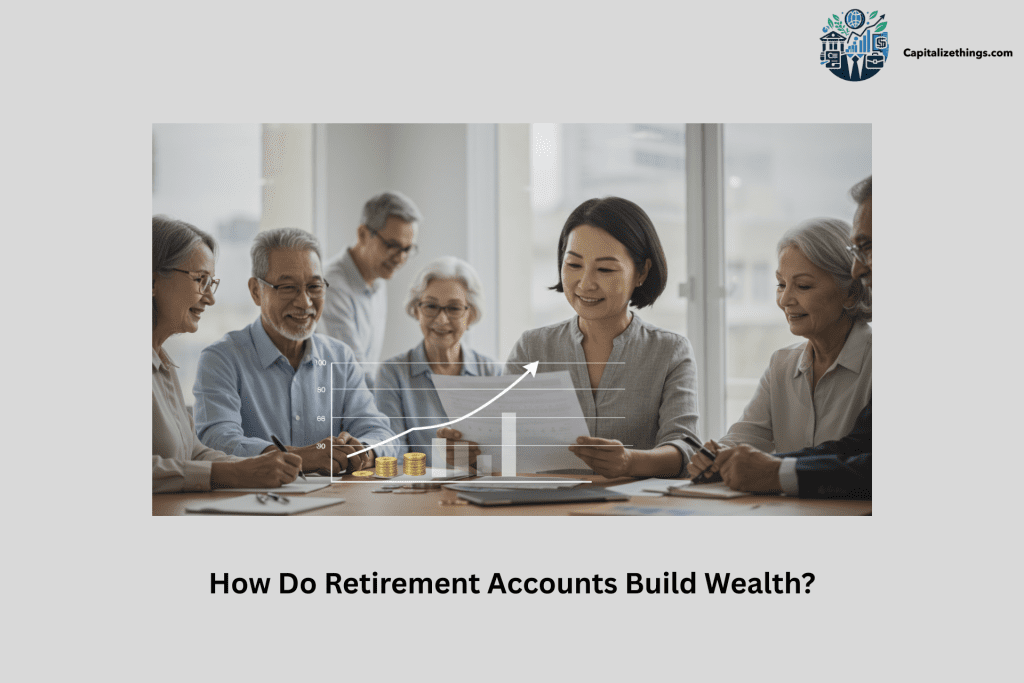
Do 401(K)S Use Tax-Deferred Growth?
Yes, 401(k) plans use tax-deferred growth, meaning contributions and earnings accumulate without being taxed until withdrawal. This structure allows the full account balance to compound annually, increasing long-term value. Contributions reduce taxable income in the year they are made, and taxes apply only when funds are withdrawn, typically during retirement at a lower tax rate. According to the Internal Revenue Service (IRS), this deferral supports stronger retirement savings by maximizing reinvestment of gains.
Tax-deferred growth enhances compounding over time, especially with consistent contributions and employer matches. Early withdrawals before age 59½ may incur penalties and disrupt growth potential. Strategic use of 401(k) plans aligns with long-term investment goals and financial planning for post-retirement stability.
Do Retirement Accounts Require Long-Term Commitment?
Yes, retirement accounts are designed for long-term commitment, as they maximize returns through compounding interest and market growth over extended periods. These accounts penalize early withdrawals, both financially and tax-wise, discouraging short-term access. For example, a 30-year-old who starts investing $200 monthly could see exponential growth by retirement due to sustained compounding. According to Vanguard’s 2022 research, long-term holding significantly improves portfolio performance across asset classes.
Time is a critical factor in building wealth within retirement accounts. The longer capital remains invested, the more it benefits from reinvested dividends, interest, and price appreciation. Short-term usage undermines the structural intent and efficiency of these accounts, making them unsuitable for immediate liquidity needs.
Can IRAS Include Stocks And Bonds?
Yes, Individual Retirement Accounts (IRAs) can include stocks and bonds, offering diversified exposure to both equity and fixed-income assets. Stocks provide capital appreciation potential, while bonds deliver steady income through interest payments. A balanced IRA might combine ETFs tracking major indices with government or corporate bonds to manage risk and return. According to Morningstar (2021), diversified asset allocation within IRAs increases resilience against market volatility.
These accounts allow investors to customize portfolios based on risk tolerance, time horizon, and financial goals. Holding a mix of stocks and bonds helps mitigate downside risk while supporting long-term growth. Proper allocation ensures alignment with individual investment strategies and retirement timelines.
Do Roth IRAS Require Employer Matching?
No, Roth IRAs do not require employer matching, as they are individual retirement accounts funded with after-tax dollars, allowing tax-free growth and withdrawals in retirement. Unlike employer-sponsored plans such as 401(k)s, Roth IRAs are opened directly by individuals through financial institutions. Contributions are made post-tax, meaning qualified withdrawals, including earnings, are entirely tax-free, assuming the account has been held for at least five years and the owner is age 59½ or older.
This investment structure provides personal control over contributions, fund selection, and long-term growth strategies without relying on employment benefits. According to Internal Revenue Service (IRS) guidelines, income limits apply for eligibility, ensuring that only qualifying individuals can contribute directly. This model supports self-directed retirement planning within the broader spectrum of investment types that include both employer-linked and independent vehicles.
What Are Alternative Investment Strategies?
Alternative investment strategies refer to non-traditional financial instruments that function outside conventional asset classes like stocks and bonds, typically offering diversification benefits and unique risk-return dynamics. These tools include real estate, private equity, hedge funds, commodities, and collectibles—often requiring specialized knowledge and longer holding periods. Unlike typical market-linked investments, alternative strategies operate in less liquid environments and rely on mispricing, scarcity, or macroeconomic shifts for returns. They play a key role in modern portfolio construction by reducing correlation with public markets.
These investment methods often demand higher capital entry points and extended time horizons to realize full value. Real estate and infrastructure projects appreciate gradually, rewarding patient investors through rental income and appreciation. Private equity and venture capital target high-growth companies before they reach public exchanges, delivering outsized returns if exits occur successfully. Hedge funds, conversely, deploy complex tactics such as short selling and arbitrage to generate alpha regardless of overall market direction.
According to a report by Preqin (2022), institutional investors increased allocations to alternatives, citing lower volatility and improved risk-adjusted returns over traditional portfolios. This shift reflects growing recognition of the strategic value alternative assets provide when integrated thoughtfully. However, due to regulatory barriers and complexity, these strategies remain largely accessible to accredited or sophisticated investors rather than the general retail audience.
Do Private Equity Investments Exclude Retail Investors?
Yes, private equity investments generally exclude retail investors due to legal, structural, and economic constraints tied to accreditation requirements and minimum capital thresholds. Most private equity funds are limited to accredited investors who meet specific net worth or income benchmarks set by regulators such as the SEC. These funds avoid broad distribution to protect inexperienced participants from risks linked to illiquid, unregistered securities. Instead, they cater primarily to institutions and high-net-worth individuals capable of enduring extended lock-up periods and potential losses.
Private equity functions through closed-door transactions involving direct company buyouts, growth-stage financing, or distressed asset turnaround programs. Entry into these deals demands substantial capital commitments, often starting at $250,000 or more, which limits participation to elite investors. Additionally, the lack of daily liquidity makes private equity unsuitable for average savers who may need access to their capital on short notice. As a result, most standard brokerage accounts do not offer exposure to this asset class under current regulatory frameworks.
Despite increasing pressure for broader access, few platforms have introduced indirect routes for retail investors to gain partial exposure. For example, Business Development Companies (BDCs) and publicly traded private equity vehicles allow fractional ownership but come with diluted returns and different risk dynamics. According to a Harvard Law School Forum (2021), expanding private equity access requires balancing innovation with investor protection to maintain market integrity.
Are NFTS Examples Of Alternative Assets?
Yes, NFTs (Non-Fungible Tokens) are examples of alternative assets that represent unique digital ownership rights, often tied to creative or virtual items such as art, music, and in-game collectibles. Built on blockchain technology, NFTs operate outside traditional financial markets and derive value from scarcity, authenticity, and market demand. Unlike conventional investments like stocks or bonds, NFTs offer a non-correlated asset class that appeals to investors seeking diversification through rare or culturally relevant digital assets.
NFTs carry high volatility and speculative risk due to their dependence on trends and evolving consumer interest. While some NFTs have generated significant returns, they do not produce income like dividend stocks or interest-bearing bonds. According to a 2022 report by Deloitte, the NFT market remains highly fragmented and lacks standardized valuation methods, making expert research essential for informed participation.
Can P2p Lending Replace Traditional Bonds?
Yes, P2P lending can serve as an alternative to traditional bonds for certain investors, offering fixed-income-like returns by directly funding borrowers through online platforms such as LendingClub. This model allows individuals to earn interest based on borrower repayment schedules, similar to bond coupon payments. P2P lending provides higher yield potential than many government or corporate bonds, particularly appealing to those with risk tolerance and a desire for direct capital deployment.
However, P2P lending carries greater default risk compared to bonds, as borrowers may fail to repay despite credit assessments. Diversification across multiple loans is crucial to mitigate this exposure. A 2021 study published in the Journal of Financial Transformation found that while P2P lending offers attractive average returns, its performance is sensitive to economic cycles and borrower credit quality.
How To Start Investing With Small Amounts?
Starting to invest with small amounts involves allocating limited capital into diversified, accessible financial instruments such as fractional shares, ETFs, or index funds through low-barrier platforms that support micro-investments. This method enables beginners to build wealth gradually while gaining exposure to market dynamics. Consistent contributions, however small, leverage compounding and habit formation to create long-term value. Strategic selection of cost-effective tools ensures efficient growth without requiring large initial deposits.
Micro-investing apps like Acorns or Stash automate the process by rounding up daily purchases or scheduling recurring transfers into investment accounts. These platforms offer pre-curated portfolios aligned with risk profiles and financial goals, reducing decision fatigue for new investors. According to a 2021 study by The Journal of Financial Education, automated investing behaviors significantly improve savings consistency and financial literacy among young investors.
Small-amount investing also provides a practical environment for learning market behavior without high risk. Users observe real-time gains and losses, which enhances decision-making skills and emotional resilience in volatile conditions. Over time, this hands-on experience supports more informed transitions into advanced investment strategies.
Can Fractional Shares Reduce Entry Costs?
Yes, fractional shares reduce entry costs by enabling investors to purchase partial ownership in high-priced stocks for as little as $1 or $10. This financial tool eliminates the need to buy full shares, allowing access to premium equities such as Amazon (AMZN) or Alphabet (GOOGL) without significant upfront capital. Fractional shares open markets previously out of reach for small investors, promoting broader participation and diversification.
By lowering minimum investment thresholds, fractional shares encourage consistent investing habits and portfolio experimentation across sectors. According to a 2021 report by FINRA, platforms offering fractional trading saw a 65% increase in first-time investor activity, indicating growing adoption among younger and lower-income demographics.
Do Micro-Investing Apps Require Large Deposits?
No, micro-investing apps do not require large deposits; they allow users to begin investing with as little as $1 through automated round-ups or recurring transfers. Platforms like Acorns and Robinhood eliminate traditional barriers by integrating low-cost ETFs and fractional share options into user-friendly interfaces. These apps target individuals seeking to grow wealth gradually from spare change.
Micro-investing apps also foster financial literacy and discipline by linking small contributions to compounding growth over time. A 2020 survey by Morningstar found that 43% of micro-investor users were under age 30, highlighting their appeal to beginners with limited capital but long-term financial aspirations.
Are ETFS Affordable For Beginners?
Yes, ETFs are affordable for beginners due to their low expense ratios, tradability in full or fractional shares, and broad market exposure starting at under $100 per unit. Tracking indexes such as the S&P 500 (SPX), ETFs offer instant diversification across multiple sectors while minimizing individual stock risk. They function as accessible building blocks for constructing balanced investment strategies.
ETFs support gradual portfolio development by enabling incremental purchases and reinvestment of dividends. As of 2023, BlackRock reported that nearly 70% of new retail investors started with ETF-based portfolios due to their simplicity, transparency, and cost-efficiency compared to actively managed mutual funds.
How Do Investing And Speculation Differ?
Investing allocates capital into assets based on fundamental value, aiming for long-term growth through dividends, interest, or appreciation, while speculation seeks short-term profit from price volatility using market sentiment, timing, or event-driven assumptions. Both involve financial risk but differ in time horizon, research depth, and outcome predictability. Investing emphasizes portfolio diversification and compounding, whereas speculation relies on rapid decision-making and directional bets.
The distinction also lies in the methodology: investing evaluates earnings, cash flow, and economic indicators to build wealth systematically, according to Graham and Dodd’s Security Analysis (2009), which remains foundational in value investing principles. In contrast, speculation often bypasses deep analysis, favoring technical patterns, news cycles, or macroeconomic shocks to extract quick returns. While investing suits individuals with defined financial goals and patience, speculation demands high market awareness and emotional control, making it suitable only for experienced participants.
Are REITs Examples Of Income-Generating Assets?
Yes, REITs (Real Estate Investment Trusts) are income-generating assets that provide regular returns through dividends derived from rental income generated by commercial real estate holdings. These trusts must distribute at least 90% of taxable income to shareholders, making them one of the most reliable sources for consistent cash flow. Unlike growth-focused investments, REITs emphasize yield and liquidity, offering investors exposure to real estate without direct property management.
According to the National Association of Real Estate Investment Trusts (NAREIT), REITs have historically delivered above-average dividend yields compared to broad equity markets. This makes them a favored choice among conservative investors seeking passive income with relatively lower volatility than equities.
Can Cryptocurrencies Generate Returns Without Dividends?
Yes, cryptocurrencies generate returns without dividends by leveraging price appreciation driven by market demand, scarcity, and adoption trends. Unlike traditional income assets such as bonds or stocks, digital assets like Bitcoin (BTC) and Ethereum (ETH) derive value from speculative trading and utility within decentralized finance (DeFi) ecosystems. Their return mechanism relies solely on capital gains rather than periodic payouts.
For example, Bitcoin’s halving events and growing institutional acceptance have historically led to significant price surges. According to a report by Grayscale Investments (2021), crypto markets show high volatility but also offer some of the highest potential returns when timed effectively.
Do Investors Not Seek Short-Term Gains?
No, many investors do seek short-term gains by engaging in active trading strategies such as day trading, swing trading, or momentum investing. These approaches aim to capitalize on price fluctuations over days or weeks instead of waiting for long-term appreciation. Short-term investors rely heavily on technical analysis, news cycles, and market sentiment to make rapid decisions.
A study by Barber and Odean (2020) found that individual traders who actively buy and sell stocks tend to outperform only if they possess superior timing skills and access to timely information. However, frequent trading increases transaction costs and exposes investors to higher risks due to market unpredictability.
Is Speculation Short-Term Or Long-Term?
Speculation is primarily a short-term strategy where traders attempt to profit from temporary price swings rather than underlying asset fundamentals. Speculators often use leveraged instruments such as options, futures, or volatile equities to capture quick market moves. Unlike investing, which focuses on compounding and long-term value, speculation centers around timing, volatility, and behavioral patterns.
According to Schwert (2022), speculative trades carry significantly higher risk and require precise entry and exit points. While potentially rewarding, this approach is best suited for experienced traders with robust risk controls and deep market knowledge.
How Do Accredited Investors Access Private Equity?
Accredited investors access private equity through specialized funds, syndicated deals, or direct co-investments in pre-IPO companies that are not publicly traded. These opportunities typically require high minimum investments and are reserved for individuals meeting SEC-defined net worth or income thresholds. Private equity offers exposure to growth-stage businesses, buyouts, and venture capital with the potential for outsized returns.
For instance, firms like Blackstone (BX) and KKR & Co. (KKR) manage large private equity portfolios that allow accredited investors to participate in exclusive deals. According to a Cambridge Associates report (2023), private equity has historically outperformed public equity benchmarks over full economic cycles. Capitalizethings.com connect qualified investors with vetted private equity opportunities tailored to their capital, risk tolerance, and long-term wealth-building objectives. Reach out to us via our professional services form or call us at +1 (323)-456-9123 for free 15 minutes consultation to get help.
Can Derivatives Hedge Against Market Volatility?
Yes, derivatives can hedge against market volatility by allowing investors to offset downside risk using instruments such as put options, futures contracts, or swaps. These tools enable portfolio protection during market downturns or geopolitical shocks by locking in prices or limiting losses. Hedging with derivatives is a strategic move used by institutional and sophisticated retail investors alike.
For example, purchasing put options on the S&P 500 index can cushion equity losses during a market crash. According to Hull (2022), effective hedging requires precise calculation of strike prices, time decay, and volatility expectations to ensure optimal risk mitigation.
Do Mid-Cap Stocks Balance Growth And Risk?
Yes, mid-cap stocks balance growth and risk. These companies are larger than small caps and smaller than large caps. Mid-cap stocks offer the best mix of stability and upside. An investor may choose mid-cap stocks like Garmin for strong returns. These stocks suit moderate investors. They provide better growth than large caps with lower risk than small caps.
Are Gold Stocks Inflation-Proof Or Volatile?
No, gold stocks are not fully inflation-proof. Gold stocks respond to gold prices, which move fast. They offer top value in inflation but carry high risk. Firms like Barrick Gold show the trend. These stocks may rise in crisis. Gold stocks suit experienced investors. They offer a hedge with strong upside but also large market swings.
How Do REITS Generate Rental Income?
Yes, REITs generate rental income through owned property. These trusts buy buildings like malls, offices, or homes. Rent paid by tenants creates income. REITs pay high dividends. Examples include Realty Income and Simon Property. These investments trade like stocks. REITs suit income investors. They offer top liquidity, solid returns, and access to real estate without ownership.
Do ETFS Track Indices Or Commodities?
Yes, ETFs track indices or commodities. These funds follow baskets like the S&P 500 or gold prices. SPY tracks top U.S. stocks. GLD follows gold movements. ETFs suit both beginners and experts. They offer top liquidity and low cost. Investors gain exposure to markets without buying each asset. ETFs give the best mix of safety and access.
Can Condotels Combine Rental And Ownership?
Yes, condotels combine rental and ownership. Owners buy hotel units and earn income from bookings. Condotels work like real estate investments. They offer top returns in tourist areas. A Miami Beach condotel earns well in peak season. These suit risk-tolerant investors. Condotels offer both use and income. They involve costs like maintenance and depend on tourism trends.
Is Socially Responsible Investing Ethical?
Yes, socially responsible investing is ethical. This method includes only companies with strong values. SRI avoids industries like tobacco or weapons. It supports green energy or fair labor. Firms like Tesla and Patagonia show this path. SRI suits value-driven investors. It offers good returns and aligns with beliefs. SRI balances purpose and profit for long-term impact.
Do Annuities Guarantee Returns Or Flexibility?
No, annuities guarantee returns but not flexibility. Annuities pay fixed income over time. Insurance firms sell annuities like fixed or variable plans. These suit retirement planning. They offer top stability but less access to funds. Annuities lock money for years. Investors trade liquidity for steady payouts. These plans fit conservative investors with long-term goals.
Are Lithium Stocks Linked To EV Trends?
Yes, lithium stocks link directly to EV trends. Lithium powers electric car batteries. Stocks like Albemarle or Livent benefit from EV growth. These companies support Tesla and other automakers. Lithium stocks show top demand in green sectors. They suit growth investors. These stocks carry market risk but follow one of the strongest global shifts.
How Does Financial Modeling Forecast Returns?
Yes, financial modeling forecasts returns through data. It builds projections using revenue, cost, and trends. Analysts use Excel to create models. A discounted cash flow model is the best example. This process helps pick top investments. Financial modeling suits expert users. It offers clear future estimates. Investors rely on models for better decisions with data-backed insight.
Are Impact Investments Profitable And Ethical?
Yes, impact investments are profitable and ethical. These investments support causes like clean water or education. Firms report social gains with strong returns. Examples include LeapFrog or Triodos. Impact investors seek measurable change. These assets suit values-based investors. Impact investing blends the highest ethics with market goals. It works for those who want money to serve society.
Conclusion
Investing builds the strongest path to long-term financial growth. The best investors choose clear goals and study each type. Stocks, bonds, and funds offer top returns with different risks. Real estate, crypto, and alternatives also help money grow. Each investor needs the best plan to match risk and reward. Investing supports wealth, freedom, and future goals with the most direct and proven tools in finance.

Larry Frank is an accomplished financial analyst with over a decade of expertise in the finance sector. He holds a Master’s degree in Financial Economics from Johns Hopkins University and specializes in investment strategies, portfolio optimization, and market analytics. Renowned for his adept financial modeling and acute understanding of economic patterns, John provides invaluable insights to individual investors and corporations alike. His authoritative voice in financial publications underscores his status as a distinguished thought leader in the industry.





